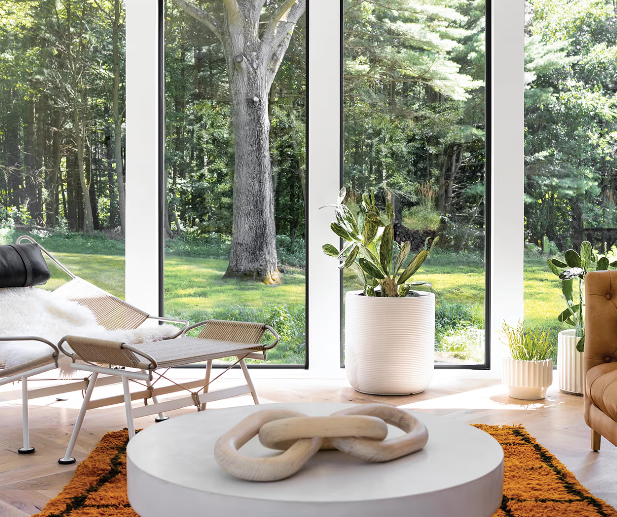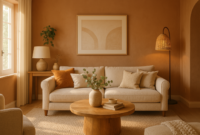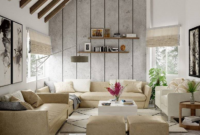Natural Lighting
Natural lighting is one of the most influential and captivating elements in architecture and design. It has the power to transform spaces, influence mood, and impact human well-being in subtle yet profound ways. From ancient times to modern architectural innovations, the strategic use of sunlight has remained a central theme in creating inviting and functional environments. This article delves into the science, art, and benefits of natural lighting, exploring its importance in our homes, workplaces, and public spaces.
The Basics of Natural Lighting
Natural lighting, often referred to as daylighting, is the use of sunlight to illuminate the interior of buildings. It is primarily introduced through windows, skylights, glass doors, and other architectural features that allow daylight to enter a space.
Unlike artificial lighting, which requires electricity and mechanical systems, natural light is abundant, free, and dynamic. It changes throughout the day and varies with seasons, creating a living, breathing quality in the spaces it illuminates. The sun’s position, cloud cover, and atmospheric conditions contribute to the intensity and hue of natural light.
There are three main types of natural light used in design:
-
Direct sunlight – Light that travels straight from the sun into a space. It is intense and casts sharp shadows.
-
Diffuse daylight – Light scattered by clouds or objects that produce a softer, more even light.
-
Reflected light – Sunlight that bounces off surfaces such as walls, water, or nearby buildings to illuminate a space indirectly.
Each type contributes uniquely to the ambiance and functionality of an environment.
Historical Significance
Historically, before the invention of electric lighting, buildings were entirely dependent on natural sources of illumination. Ancient civilizations like the Egyptians, Greeks, and Romans designed temples and homes with courtyards, clerestory windows, and open layouts to maximize light.
The Gothic cathedrals of Europe with their soaring stained-glass windows harnessed sunlight not only for visibility but also to create spiritual and emotional effects. These structures exemplify how natural light has long been appreciated not just for its utility but for its emotional and aesthetic power.
Natural Lighting in Architecture
In modern architecture, natural lighting remains a cornerstone of sustainable and biophilic design. Architects now combine traditional wisdom with advanced technologies to optimize daylight in buildings.

Key strategies include:
-
Orientation: Designing a building to face the right direction can maximize exposure to the sun. For example, south-facing windows in the Northern Hemisphere allow for consistent daylight year-round.
-
Window placement and size: Strategic window sizing and positioning control how much light enters a space without causing glare or heat buildup.
-
Use of reflective surfaces: Light-colored walls, mirrors, and glossy surfaces help distribute light more effectively throughout a room.
-
Skylights and light tubes: These allow light to penetrate deeper into interior spaces that may not have access to external walls.
-
Shading devices: Awnings, blinds, louvers, and trees help control the intensity and direction of sunlight to prevent overheating or discomfort.
Modern tools like Building Information Modeling (BIM) and daylight simulation software allow architects to model how sunlight will behave in a space before construction begins, optimizing both aesthetics and efficiency.
Health and Well-being
One of the most compelling reasons to prioritize natural lighting is its significant impact on human health and well-being.
Circadian Rhythms
Natural light regulates our circadian rhythms — the internal biological clock that governs our sleep-wake cycles. Exposure to bright natural light during the day helps signal our bodies to stay alert and energetic. As the sun sets and light diminishes, melatonin production increases, promoting restful sleep.
In environments with poor lighting, such as windowless offices or homes with limited sunlight, this rhythm can be disrupted, leading to fatigue, insomnia, and mood disorders.
Mental Health
Numerous studies have linked exposure to natural light with improved mood, reduced stress, and lower rates of depression. Sunlight boosts serotonin levels — a neurotransmitter associated with feelings of well-being and happiness.
This is particularly important in regions with long winters and limited daylight, where Seasonal Affective Disorder (SAD) is common. Incorporating more natural light into living and working spaces can help mitigate these effects.
Physical Health
Vitamin D synthesis, essential for bone health and immune function, is stimulated by sunlight exposure. While it’s important to avoid excessive UV exposure, moderate daily sunlight can contribute significantly to physical well-being.
Additionally, well-lit spaces reduce eye strain, especially when working on screens or reading, and can minimize the need for artificial lighting, which sometimes causes headaches and discomfort.
Environmental and Economic Benefits
Natural lighting is also a critical component of sustainable design. Reducing the reliance on artificial lighting lowers electricity consumption, contributing to lower energy bills and a smaller carbon footprint.
Energy Efficiency
According to the U.S. Department of Energy, lighting accounts for about 15% of a typical household’s electricity use. In commercial buildings, the percentage can be even higher. By incorporating daylighting strategies, buildings can significantly cut their lighting energy needs.
Advanced systems, like daylight-responsive lighting controls, dim artificial lights based on the amount of natural light in a space, providing an intelligent balance between comfort and efficiency.
Passive Solar Heating
In colder climates, windows that allow low-angle winter sunlight to enter and warm interior spaces can reduce heating costs. Thermal mass materials like stone or concrete can store this heat and release it slowly, maintaining a comfortable temperature with minimal energy use.
Enhancing Aesthetics and Space Perception
Natural light has a unique way of enhancing architectural details and materials. It adds depth, texture, and movement to spaces, changing throughout the day to create dynamic environments.
Well-lit interiors often appear more spacious, open, and welcoming. Sunlight can accentuate colors, bring out the grain in wood, or cast beautiful shadows through textured glass or plants. Designers often use light as a compositional element, crafting spaces that feel alive and connected to the outdoors.
Challenges and Solutions
While the benefits are numerous, using natural light effectively can present challenges:
-
Glare: Overexposure to direct sunlight can cause glare, making it hard to see screens or read.
-
Overheating: In hot climates or poorly designed buildings, too much sunlight can raise indoor temperatures uncomfortably.
-
Inconsistent lighting: Cloudy days or winter months can reduce the availability of natural light.
Solutions include:
-
Using double-glazed windows or low-E glass to reduce heat transfer.
-
Installing adjustable blinds or curtains to manage glare.
-
Combining natural and ambient artificial lighting to ensure consistent illumination.
Natural Light in Interior Design
Interior designers often leverage natural light to define the atmosphere of a room. Here are some tips to make the most of natural lighting indoors:
-
Use light-colored walls and surfaces to reflect light deeper into the room.
-
Keep windows clean and unobstructed to maximize light entry.
-
Use sheer curtains instead of heavy drapes to diffuse harsh light while maintaining brightness.
-
Incorporate mirrors to bounce light and create the illusion of more space.
-
Choose furniture placement that doesn’t block windows or light paths.
The Future of Natural Lighting
The growing awareness of environmental issues, mental health, and energy efficiency is pushing architects and designers to rethink lighting in every project. Future buildings will likely feature dynamic façades that adjust to sun exposure, more extensive use of smart lighting systems, and integration of nature through biophilic design.
As urban density increases, innovative approaches like solar tubes, light shelves, and atriums will become even more crucial in bringing daylight to interior spaces.
Conclusion
Natural lighting is more than just a design preference — it is a fundamental component of human-centric, sustainable, and beautiful architecture. It connects us to the natural world, supports our health, saves energy, and enhances our quality of life. Whether you’re building a home, renovating an office, or simply rearranging your living room, embracing natural light can bring transformative results.
By understanding how light behaves and how to use it effectively, we can create environments that are not only functional and efficient but also uplifting and inspiring. In a world increasingly dominated by artificial stimulation, the simple brilliance of sunlight remains one of the most powerful design tools at our disposal.


